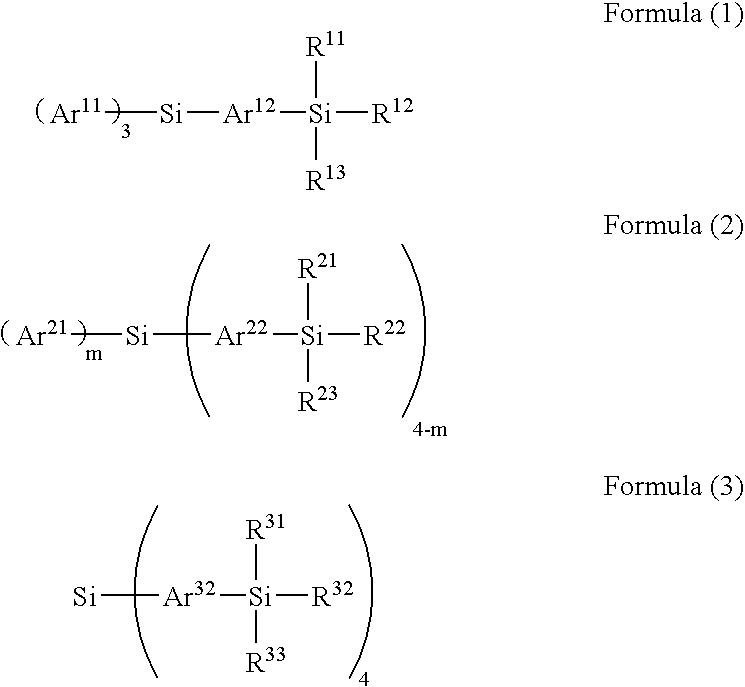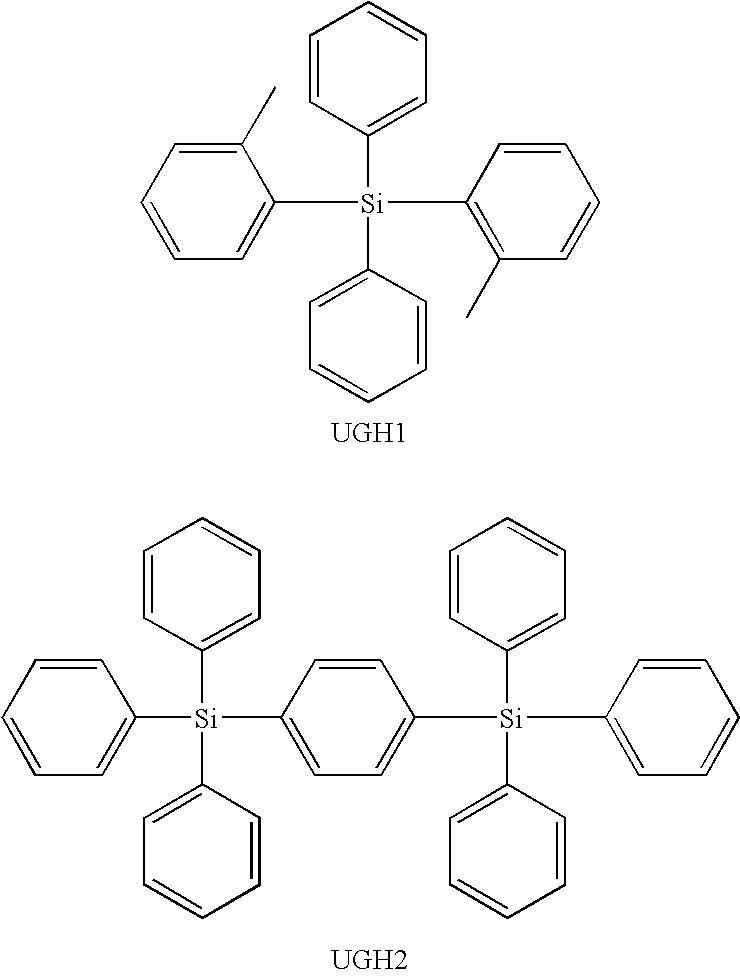Organic electroluminescent device
a technology of electroluminescent devices and organs, which is applied in the direction of discharge tubes/lamp details, luminescent screens, discharge tubes/lamps, etc., can solve the problem that crystallization in the device is easy to be caused
- Summary
- Abstract
- Description
- Claims
- Application Information
AI Technical Summary
Benefits of technology
Problems solved by technology
Method used
Image
Examples
example 1
[0129] A washed ITO substrate was placed in a vapor deposition apparatus, and copper phthalocyanine was vapor-deposited to a thickness of 10 nm thereon as a hole injecting material. Then α-NPD (N,N′-diphenyl-N,N′-di(α-naphthyl)-benzidine) was vapor-deposited to a thickness of 40 nm thereon as a hole transport material. Thereon CBP (hole injecting and transporting compound) was vapor-deposited to a thickness of 15 nm, further thereon Compound (1-1) and Compound a were co-vapor-deposited in the ratio 20:1 (mass ratio) to a thickness of 25 nm, and yet further thereon Azole Compound b (electron injecting and transporting compound) was vapor-deposited to a thickness of 40 nm. A patterned mask with a square opening to give a luminescent area of 4 mm×5 mm was placed on the organic thin film. Thereon lithium fluoride was vapor-deposited to a thickness of about 1 nm in the vapor deposition apparatus, and further thereon aluminum was vapor deposited to a thickness of about 200 nm to fabricate...
example 2
[0132] A device was fabricated and evaluated as in Example 1 using Compound c in place of using Compound a. As a result, a green-luminescence having the chromaticity values of (0.27, 0.62) is obtained and the external quantum efficiency of the device is 7.1%.
[0133] The device durability is evaluated, and the luminescence half time is about 630 hours, under conditions of an initial luminescence of 2000 cd / m2 and a constant current value.
example 3
[0134] A device was fabricated and evaluated as in Example 1 using Compound c in place of Compound a and using a mixture of Compound (1-2) and CBP in the mass ratio 1:1 in place of Compound (1-1). As a result, a green-luminescence having the chromaticity values of (0.27, 0.62) is obtained, and the external quantum efficiency of the device is 7.1%.
[0135] The device durability is evaluated, and the luminescence half time is about 700 hours, under conditions of an initial luminescence of 2000 cd / m2 and a constant current value.
PUM
| Property | Measurement | Unit |
|---|---|---|
| Phosphorescence quantum yield | aaaaa | aaaaa |
| Luminescence | aaaaa | aaaaa |
Abstract
Description
Claims
Application Information
 Login to View More
Login to View More - R&D
- Intellectual Property
- Life Sciences
- Materials
- Tech Scout
- Unparalleled Data Quality
- Higher Quality Content
- 60% Fewer Hallucinations
Browse by: Latest US Patents, China's latest patents, Technical Efficacy Thesaurus, Application Domain, Technology Topic, Popular Technical Reports.
© 2025 PatSnap. All rights reserved.Legal|Privacy policy|Modern Slavery Act Transparency Statement|Sitemap|About US| Contact US: help@patsnap.com



